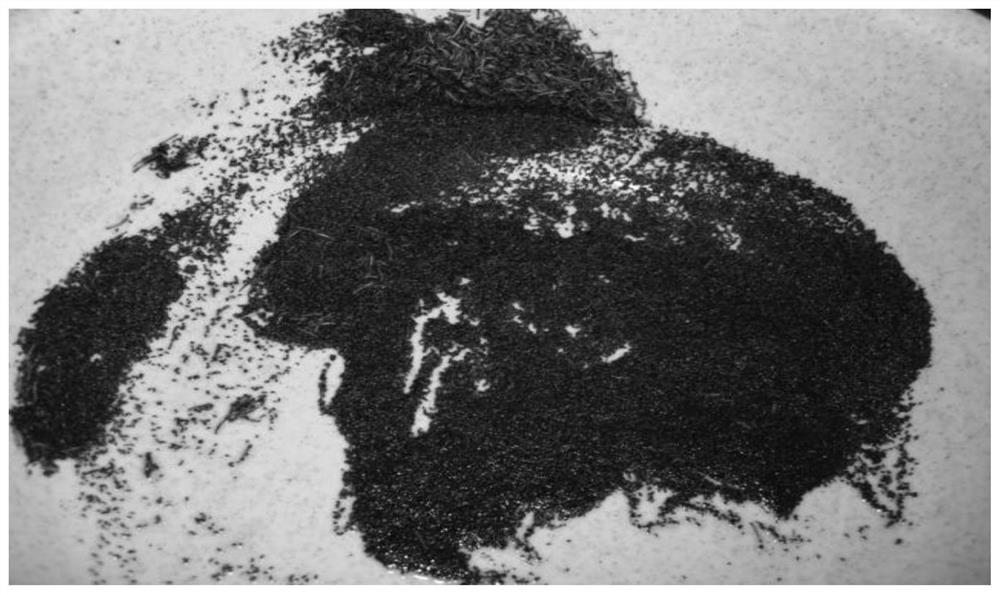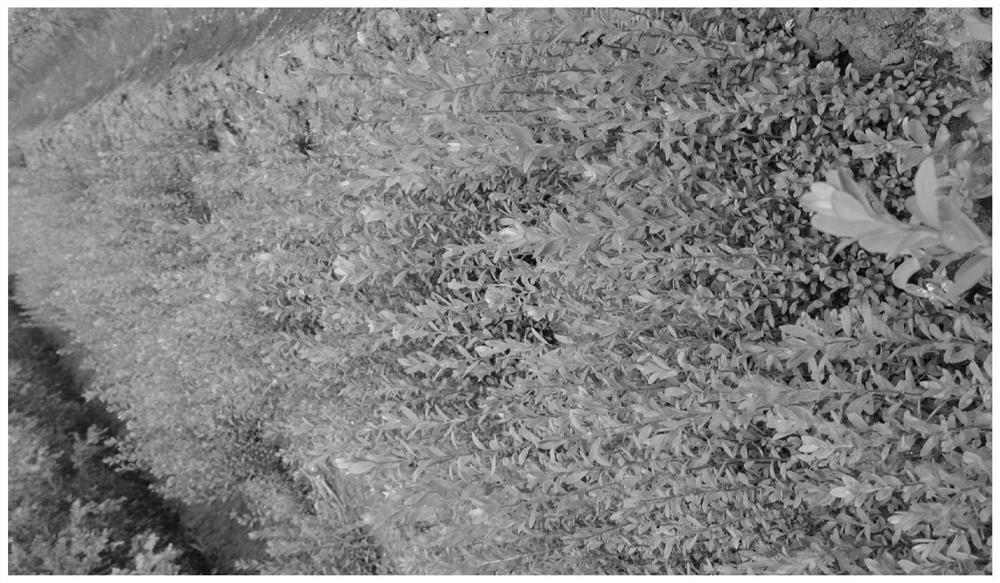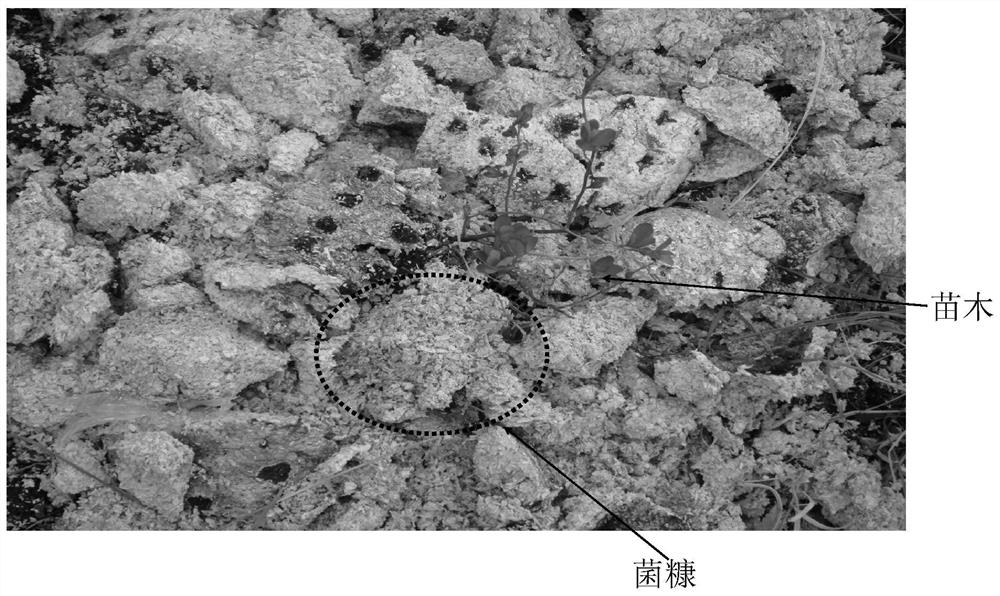Vaccinium uliginosum resource recovery method based on Vaccinium uliginosum seedlings
A technology of seedling and recovery method of lingonberry, which is applied in the field of resource recovery of scarce economic plants, can solve problems such as no way out for expanding resources, lack of long-term planning for development and utilization, and intensified inter-species competition, so as to increase the number of plants per unit area, Improve the yield per unit area and the effect of early germination
- Summary
- Abstract
- Description
- Claims
- Application Information
AI Technical Summary
Problems solved by technology
Method used
Image
Examples
Embodiment 1
[0047] The present invention provides a kind of method of vaccinia seedlings building orchard cultivation and recovery of vaccinia resources, comprising the following steps:
[0048] 1. Seed collection and storage
[0049] Before mid-August, the huckleberry fruit can be picked when it is purple and covered with a white powder. Picked berries should be processed in time to avoid fermentation. Now place the fruit in a container, rub the berries well and strain out the juice. Then water selection, float out the pulp, peel and impurities floating on the water surface and shriveled seeds; control the full seeds to dry the water, and put them in a cool place to dry (such as figure 1 Shown), when the moisture content of seeds reaches 5-6%, refrigerate in the refrigerator of 4-5 ℃.
[0050] 2. Seed treatment
[0051] When the soil is frozen at the end of October, soak the seeds in clean water for 12 hours, then disinfect with 0.5% potassium permanganate aqueous solution for 2 hour...
Embodiment 2
[0073] The difference between embodiment 2 and embodiment 1 is that in the fifth step, the way of reclaiming the land is selected in the way of restoring the lingonberry forest resources. The restoration of the site is to reforest the open space where the original Dusi huckleberry forest has disappeared. The method of afforestation is:
[0074] (1) Under suitable site conditions, afforestation in low holes and caves is carried out.
[0075] (2) Plant S2-0 lingonberry seedlings with a row spacing of 1m×1m.
[0076] (3) After planting, cover the fungus chaff on the rootstock of the seedlings (such as image 3 Shown in the photo), weeding, weeding, irrigation and tending should be strengthened to renew the afforestation site (the water content in the soil should reach more than 40%, adopt drip irrigation or sprinkler irrigation measures), and the survival rate of afforestation can reach 100%. Wherein, the seedling type used in this embodiment is the seedling that has been cult...
Embodiment 3
[0078] The difference between embodiment 2 and embodiment 1 is that in the 5th step, in the mode of recovering the lingonberry forest resources, select to replant in the existing lingonberry community, the method is:
[0079] (1) In the open space where the bilberry distribution is uneven (that is, the sparsely distributed open space), the "one-pick planting" method is adopted to replant the density to make the density evenly distributed.
[0080] (2) The type of lingonberry seedlings is S1-1.
[0081] (3) The row spacing of planted plants is 1m×1m.
[0082] (4) Strengthen light transmission and tending.
[0083] The type of seedlings used in this embodiment is the seedlings that have been cultivated in the seedling bed for 2 years and changed beds halfway and cultivated for 1 year. The survival rate of dusi lingonberry seedlings for gardening and afforestation has reached more than 93%.
PUM
| Property | Measurement | Unit |
|---|---|---|
| Width | aaaaa | aaaaa |
| Thickness | aaaaa | aaaaa |
| Particle size | aaaaa | aaaaa |
Abstract
Description
Claims
Application Information
 Login to View More
Login to View More - R&D Engineer
- R&D Manager
- IP Professional
- Industry Leading Data Capabilities
- Powerful AI technology
- Patent DNA Extraction
Browse by: Latest US Patents, China's latest patents, Technical Efficacy Thesaurus, Application Domain, Technology Topic, Popular Technical Reports.
© 2024 PatSnap. All rights reserved.Legal|Privacy policy|Modern Slavery Act Transparency Statement|Sitemap|About US| Contact US: help@patsnap.com










